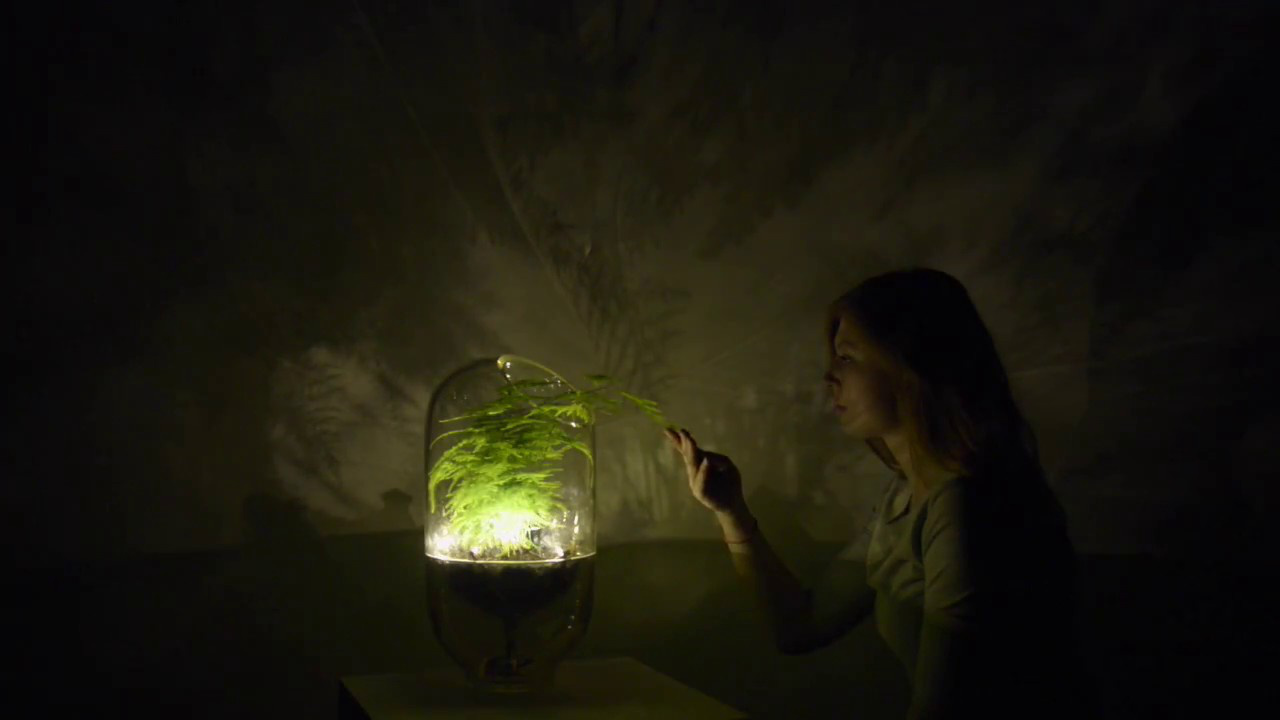

Now that’s
green energy. Dutch product designer Ermi van Oers and her team are working on the first atmospheric lamp powered by living plants.
The
Living Light does not require an electric socket. It can harvest its own energy through the photosynthetic process of the encased plant, which means the potential of this off-grid light source could be “huge,” as Van Oers told Dezeen.
“Street lights could be connected to trees. Forests could become power plants. Rice fields in Indonesia could produce food and electricity for the local population,” she said.
The designer is already applying the technology to public spaces and is working with the Dutch city of Rotterdam to light up a park.
Here’s how the lamp works, according to the Living Light website (or you can watch the video above):
“In a plant microbial fuel cell, solar energy is converted to electricity in a natural way. Plants use sunlight to photosynthesize, thus producing organic compounds. A part of these compounds is passively released via the roots into the soil. Naturally occurring bacteria break down the organic matter and release electrons and protons. The plant microbial fuel cell consists of an anode compartment that captures the electrons. The electrons are transferred via a wire to the cathode. The flow of electrons from anode to cathode can be used as electricity. The system is applicable to all sorts of plants that live in wet ground.”
Van Oers, who developed the product with Dutch plant energy research group Plant-e, spoke about the innovation Friday at TEDxAmsterdam.
The room went dark and Ermi's plant begins to glow. This is Living Light. A lamp that lights up with a touch, powered purely by the ‘waste compounds’ a plant produces during photosynthesis. #TEDxAMsterdam #onestepbeyond
photo credit: Bas Uterwijk (Flickfeeder) pic.twitter.com/NhyjHWLUXS— TEDxAmsterdam (@TEDxAmsterdam) November 17, 2017
“What is more beautiful than getting electricity from living plants?” said Marjolein Helder the CEO Plant-e. “Your environment is able to generate electricity while you are still able to enjoy nature.”
At its current state, the Living Light can only produce a small amount of energy, Van Oers admitted to Dezeen. The lamp needs a day to produce enough energy for a half hour charge.
Still, the designer has big ambitions for the product.
“I hope we come to a point where every plant pot is provided with this technology, and we don’t know any better than that plants are part of our energy system,” she said. “Nature will get a higher economical value and we will start making more green places so that biodiversity can flourish, while lowering greenhouse gas emissions at the same time.”
Van Oers plans to ship out 50 lamps by early 2018.

 233k
233k  41k
41k  Subscribe
Subscribe 